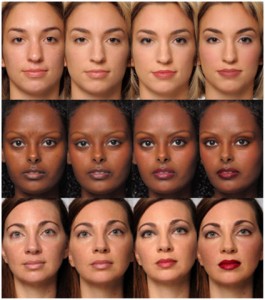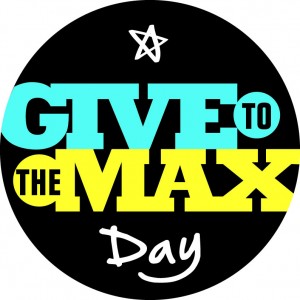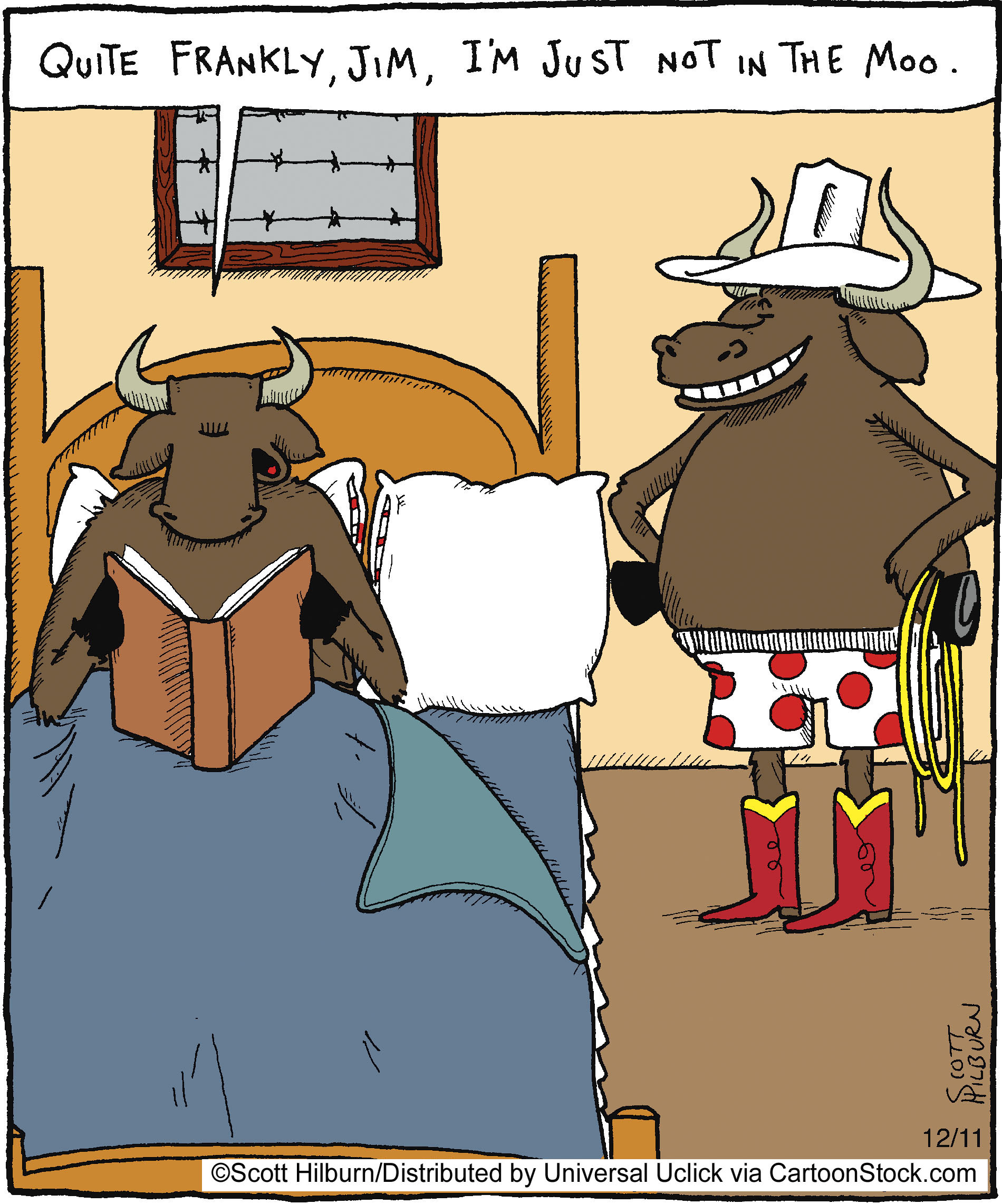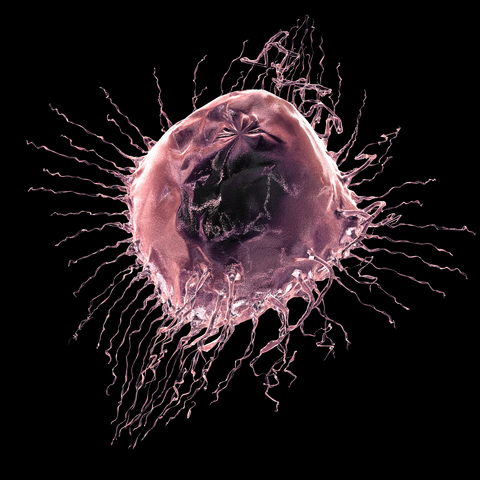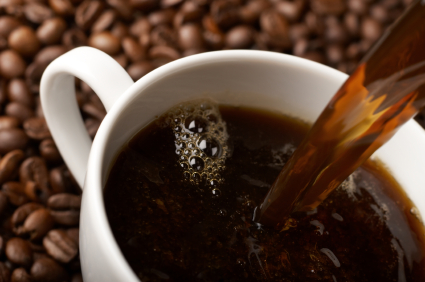Makeup ‘makes’ the woman?
Can’t make this one up.
Pardon the pun but the results of this particular study, published last week in PLOS One, deserves some attention, not because it conveys a positive message but because it challenges me I know at the cellular level by confirming that as humans, we often focus on the wrong attributes. And in no gender is this truer than in women, who are often judged for what’s on the surface rather than what lies within.
Two studies conducted by Harvard Researcher and Assistant Clinical Professor at Harvard, Nancy Etcoff, PhD, were developed to examine how adorning a face with colour cosmetics affects how other individuals will respond. These studies were seen as a natural extension of prior research that has shown that facial beauty influences first impressions and increases beliefs that the beautiful are more socially skilled, confident, successful and even more competent.
A bit of background…
Cosmetics have had a long history of controversy and shifting cultural mores. For example, in the 10,000 BC, cosmetics were used by both Egyptian men and women to enhance their spirituality and stature. In the late 18th Century, cosmetics (along with perfumes, scented water/washes and “paints”) were banned from being used to snare a husband. Thereafter in the Victorian Era, there was a return to the natural look and the fragility of women and cosmetic enhancement was frowned upon. In more modern times and we’ve gone from painting the town red in the 1920s to au natural in the 40s back to glamour in the 50s and a return to au natural in the 70s. Today, the researchers write, “cosmetics are seen as freely chosen and morally neutral agents of beauty enhancement…reflecting the individual’s preferences and choices, and the response to their use reflects” the perceiver’s ideas about makeup use and what is says about a person’s personality, intentions and character. In other words, how you look still influences what others’ think and feel about you.
The research
Etcoff’s research findings take us one step further towards substantiating that as a culture, our priorities are seriously askew. In it, she and her colleagues asked over 200 men and women to rate the same 25 female faces (Hispanic, Caucasian or African American models) with our without color cosmetics and wearing various degrees of makeup (minimal to moderate to dramatic or more specifically, ‘natural,’ ‘professional,’ or ‘glamourous’ looks). The models were rated for attractiveness, likability, trustworthiness and competence on a 7 point scale (ranging from not at all to highly/extremely).
[Photo: doi:10.1371/journal.pone.0025656.g001]
The researchers found that when the models’ were viewed for only 250 milliseconds, makeup increased ratings of their attractiveness, likability and trust. When viewers had more time to look at the faces, only the natural and professional make up looks increased the degree to which the models were perceived as likable, professional, competent and trustworthy. Still when the researchers contrasted the glamorous look to no make up at all, the found that viewers rated the models as likable, competent and significantly more attractive; only trustworthiness was questioned.
Overall, the findings show that increased beauty can be equated with increase social power and competence and to a lesser extent, how warmly someone is perceived. And researchers say that “attractiveness has assumed increasing significance [in our culture] and wil continue to do so as long as beauty remains an unconscious proxy for status and ability.”
Proctor and Gamble’s Principal Scientist of Color Cosmetics takes this even one step further, claiming, in a related press release that “makeup is a real life tool in [the female arsenal that allows women] to effectively control the way they want to be — and are — perceived.” The message? Makeup is king in a manipulator’s toolbox. And in order to take control and be in control, women need to manipulate their image.
What happens when that image is taken away from them and they are “found out?” And truly, what messages are we sending?
The other day I ran across a trailer for Miss Representation, a documentary about how women and girls are perceived our culture and how these views are influenced by the media. I would like to suggest that perhaps, we are both the influencers and the influenced.
I guess it comes down to this one question:
What makes the woman? It’s up to all of us to decide.
Read More
Health, wellbeing and social support. Give to the Max is setting a new revolution in motion…
I spend a lot of time on this blog writing about health and wellbeing and how the foundation for the two starts (and ends) with social support. Indeed, research has shown that women’s innate ability to nurture and nourish ties, coupled with overall satisfaction with work significantly predicts wellbeing especially during midlife and over the menopausal transition. It may even affect how long we live. Nowhere is this more important than in the communities where we reside because as much as many of us complain about how busy we are, there is a deep, soul stroking satisfaction in being able to help one another.
That is why it saddens me when I witness women building one another up in the community only to tear one another down in the workplace.
A line from a wonderful article that appeared in the New York Times in 2009 acknowledged certain stereotypes continue to perpetuate bad behavior. And, that as Author Peggy Klaus so aptly wrote, “the pink elephant is lurking in the room and we pretend it’s not there.”
Klaus’ point was that rather than help build each other’s careers, women often work to derail each other, engaging in “verbal abuse, job sabotage, misuse of authority and destroying of relationships.” She cited data suggesting that this type of behavior is directed from women to women more than 70% of the time, while the men who are “bullies in the workplace,” direct their aggression equally to both genders.
She encouraged us however, not to determine the why but rather, engage one another to put an end to this type of behavior.
Here’s an idea. Let’s start by supporting and building more power, self sufficiency and emotional equity from within businesses and from the top down. In other words, why not make an effort to support female-owned/founded businesses in our communities, especially those businesses that are working to eliminate inequities and promote the very qualities that improve health and wellbeing?
I recently learned that there are several female-founded nonprofit organizations in the region where I personally live that truly embody these principles:
- Suited for Change Founded in 1992, Suited for Change provides professional clothing, career and life skills education to low-income women in order to increase employment and job retention potential. Their clientele include homeless women, survivors of domestic violence, teen mothers, senior citizens, returning citizens, and women who have overcome addiction.
- Back on my Feet DC is an organization that promotes self sufficiency of homeless women (and men) — not through provision of shelter and food — but through physical activity, i.e. a running program to build confidence strength and self esteem, and teach the value of hard work, equality, respect, teamwork and leadership.
These nonprofits are only two examples of female-founded organizations that work to build self efficiency from the ground up and the top down, helping thousands of individuals learn the value of self assurance. mutual respect and support. I can only imagine what hundreds of other organizations are likewise doing to break down barriers and build wellbeing.
Want to help me find out?
If you know a local nonprofit that could use some extra support. then you need to know about Give to the Max. And if you are ready to engage other women to learn how we can consistently build one another up, then you will want to know about Give to the Max.
On November 9, thousands of organizations and residents in the region are uniting to take part in Give to the Max Day, a one-day regional online fundraiser to support local nonprofit programs. Give to the Max provides DC, Maryland and Virginia 501 (c)(3) nonprofit organizations visibility and even a lasting web presence to conduct ongoing fundraising initiatives after November 9. Most importantly, however, it’s a fantastic way for the community to give back and to support one of the region’s most important economic drivers at a time when the economy is taking a toll on charitable giving and simultatneously creating overwhelming demands for social services. For women, in particular, it’s a great start to breaking down the barriers that are destroying us in the workplace and finding ways to improve how we treat one another and why.
However, this day is not simply about women and women-owned nonprofits; an ‘Eight Neighbors Group’ alliance of the area’s leading nonprofit and civic organizations (Center for Nonprofit Advancement, Greater Washington Board of Trade, Leadership Greater Washington, Metropolitan Washington Council of Governments, Nonprofit Roundtable of Greater Washington and the Washington Regional Association of Grantmakers) have joined forces with the online fundraiser Razoo, The Community Foundation for the National Capital Region and the United Way of the National Capital Area to insure that nonprofits have an opportunity to raise thousands of dollars in donations and grants on a single day.
But why should you care if you don’t live in the DC/MD/VA region?
Give to the Max is just a start, an incentive for other other regions around the country to take back the health of their communities and leverage the individual for the collective wellbeing. As women, we have an opportunity to engage one another to end destructive behavior — not only in the workplace, but where we live.
Health and wellbeing start from where we all dwell; the heart. Let’s Give to the Max on November 9 and set a new revolution in motion.
Read More
Wednesday Bubble: Are you in the moo? Sex and a sense of purpose
What are we bursting this week? How about midlife and sexual desire. Frankly, I’ve got sex on the brain, sex in midlife, that is. And what we need to do to insure that it continues to be enjoyable, that we desire it and that we please our partners as much as we hope that they please us. Consequently, I am reposting this piece from earlier in the year, with the hope that with a sense of purpose, you’ll become more in the moo. Or mood. Whatever the case may be.
Sexual desire. In midlife, sexual function and sexual desire aren’t well understood, primarily because there are so many factors that enter into equation. This may be why certain silver bullets, like a female viagra, has failed to show any significant improvements in the desire department. And yet, researchers continue to accrue more information about the things that influence desire in women, ranging from the quality of intimate relationships to social support and overall wellbeing. The manufacturer who discovers a pill that addresses all of these will have struck gold. Meanwhile, back in reality, as many as 75% of women in midlife rate sexual health as important enough to warrant further exploration.
Fortunately, we may have another piece of the puzzle: ‘sense of purpose,’ which appears to be associated with greater wellbeing, happiness, life satisfaction, self-esteem, personal growth and optimism. A sense of purpose also appears to improve health, prevent certain diseases and may even improve cognitive function, thereby staving off mental diseases associated with aging. In a study that appears in the online version of Menopause, 459 menopausal women who were sexually active with a partner were followed over three years. Each year, they were asked about their emotional wellbeing (including their general mood, anxiety and depression as well as how often they engaged in and enjoyed sexual activity (specifically desire, type of activity and hugging and kissing). In the final year, they took a test that rated their sense of purpose on a five point scale ranging from ‘there is not enough purpose in my life’ to ‘the things I do are all worthwhile.’
The findings?
A greater sense of purpose equaled a great enjoyment of sexual activities, independent and regardless of other specific life circumstances. In other words, psychosocial functioning, e.g. social support, quality intimacy and overall wellbeing influenced the quality of these women’s sexual lives. On the other hand, menopausal status and use of hormone therapy did not appear to play a significant role in how often women engaged in sex or if they enjoyed it. This is important, as it means that psychosocial wellbeing may ultimately be more important than hormones.
In so far as the desire to engage? Women who were younger, had more social support, felt better about themselves and weren’t suffering from vaginal dryness tended to want sex more than their older peers who didn’t enjoy these factors.
Not surprisingly, many of the factors that researchers stress may help desire and engagement are associated with greater nitric oxide levels, which Dr. Christina Northrup says can help combat sexual dysfunction and improve pleasure.
When it comes to sex in midlife? It may help to think ‘sense of purpose,’ a real sense of purpose, now. (Poetic license, Chrissie!) I’m all for it if improves activity and desire without drugs.
Read MoreOn breast cancer screening. Guest post by Dr. Elaine Schattner
Mammography screening. Should you? Or shouldn’t you?
A few weeks ago, I received a letter in the mail from the clinic where I get my mammography. Rather than the expected ‘all is fine,’ the clinic was requesting that I call to schedule another screening due to abnormal findings. Not only was this not the way that I wanted to receive news that something might be wrong, but, I opened the letter at 4 pm on a Friday afternoon, giving me little time to get over the initial shock and then get on the phone to see if I could learn a bit more before the clinic closed for the weekend.
Mammography screening has been in the news quite a bit over the past year, with lines being drawn between experts who say that screening doesn’t save lives and women who want their mammograms regardless of the facts. I happen to fall on the latter side of the aisle and while I suffered a lot of anxiety before I had a second screening, not knowing would have been even worse. (FYI – it turned out fine.)
Recently, my friend Dr. Elaine Schattner, a trained oncologist, hematologist, educator and journalist, wrote about a new review that I believe that every woman should read before deciding whether or not to have a mammogram. It puts some of the controversy into perspective and also provides a much more balanced viewpoint on the risk-benefit ratio. And rather than reinvent the wheel, I asked Elaine if I could re-run the post on Flashfree. Please share it far and wide; it’s important.
With little fanfare, the NEJM published a feature on breast cancer screening in its Sept 15 issue. The article, like other “vignettes” in the Journal, opens with a clinical scenario. This time, it’s a 42 year old woman who is considering first-time mammography.
The author, Dr. Ellen Warner, an oncologist at the University of Toronto, takes opportunity to review updated evidence and recommendations for screening women at average risk for the disease. She outlines the problem:
Worldwide, breast cancer is now the most common cancer diagnosed in women and is the leading cause of deaths from cancer among women, with approximately 1.3 million new cases and an estimated 458,000 deaths reported in 2008.(1)
On screening:
The decision to screen either a particular population or a specific patient for a disease involves weighing benefits against costs. In the case of breast-cancer screening, the most important benefits are a reduction in the risk of death and the number of life-years gained….
She breaks down the data for mammography by age groups:
For women between the ages of 50 to 69 the evidence is clear, she says. For those over 70, there are little data to support breast cancer screening. There’s a consensus that screening isn’t appropriate for women with serious coexisting illnesses and a life expectancy of less than 5–10 years.
For those between the ages of 40–49, Warner challenges the revised 2009 USPSTF recommendationson several counts. She critiques those authors’ weighting of data from the Age trial of 161,000 women, emphasizing the use of an antiquated (single view) mammography technique and flawed statistics. She considers:
…However, this change in remains highly controversial,22, 23 especially because of the greater number of years of life expectancy gained from preventing death from breast cancer in younger women. According to statistical modeling,19 screening initiated at the age of 40 years rather than 50 years would avert one additional death from breast cancer per 1000 women screened, resulting in 33 life-years gained.”
What I like about Warner’s analysis, besides its extreme attention to details in the data, is that she’s not afraid to, at least implicitly, assign value to a procedure that impacts a young person’s life expectancy relative to that of an older person.
She goes on to consider digital mammography and the Digital Imaging Screening Trial (DMIST [NCT00008346]) results. For women under 50 years, digital mammography was significantly more sensitive than film (78% vs. 51%).
The article is long and detailed; I recommend the full read including some helpful tables, with references to the major studies, and charts.
In concluding, the author, who admits receiving grant support from Amersham Health (a GE subsidiary), consulting fees from Bayer and lecture fees from AstraZeneca, returns to the hypothetical patient, and what might be said to a woman in her 40s who lacks an outstanding risk (such as a genetic disposition or strong family history):
…Mammography screening every 2 years will find two out of every three cancers in women her age, reduce her risk of death from breast cancer by 15%. There’s about a 40% chance that further imaging (such as a sonogram) will be recommended, and a 3% chance for biopsy with a benign finding.…
In my opinion (ES) this is key – that the chances of a false positive leading to biopsy are only 3% for a woman in her 40s. If those biopsies are done in the radiology suite with a core needle, every 2 years for women of average risk, the costs of false positives can be minimized.
About the author…Dr. Elaine Schattner is a trained oncologist, hematologist, educator and journalist who writes about medicine. Her views on health care are informed by her experiences as a patient with scoliosis since childhood and other conditions including breast cancer. Elaine is a Clinical Associate Professor of Medicine at Weill Cornell Medical College in New York City where she teaches part-time. Her blog, Medical Lessons, is geared towards dissecting and providing commentary on how healthcare news is comunicated in order to foster learning and help bridge the gap between patients and doctors.
Wednesday Bubble: chase the midlife blues away with a cup of java?
Coffee. The morning elixir that oh, so many of us rely on. Did you know that caffeine is the world’s most frequently ingested psychoactive substance?!
We’ve heard a lot about the blues and depression during midlife and menopause, with some experts saying that the two are connected and others, that they are not. However, regardless of whether or not menopause increases the risk for depression, it is clear that depression affects twice as many women as men, and at least 20% of all US women at some point during their lifetime. Hence, if there is an easy way to boost the success of antidepressants or behavioral or other strategies, I’m all for it. And it appears that coffee may be the part of the solution.
Coffee? Really?
In a newly published study in the esteemed Archives of Internal Medicine, researchers say that they followed over 50,000 women and examined their food intake including how often they drank caffeinated and decaffeinated coffee, tea and soft drinks and and ate chocolate. During the 10 years of the study, researchers identified slightly over 2,000 cases of depression. However, it appeared that drinking two to three cups of coffee daily reduced the risk of developing depression by 15% compared to drinking one cup a day or less. Women who drank four or more cups a day had a decreased risk of 20%. And decaffeinated beverages? No dice.
In so far as this study goes, it’s not conclusive and it could be possible that mildly depressed women drink less coffee. And keep in mind that too much of a good thing is well, too much. Studies have shown that long-term consumption of caffeine can lead to tolerance, meaning that you need greater amounts to achieve the effects that many of us crave. Nevertheless, so far, the results show that coffee may very well be mildly protective against depression.
English playwright and theatre director John Van Druten once said, “I think if I were a woman I’d wear coffee as a perfume.” I think I’d rather just drink it than wear it!
Read More





